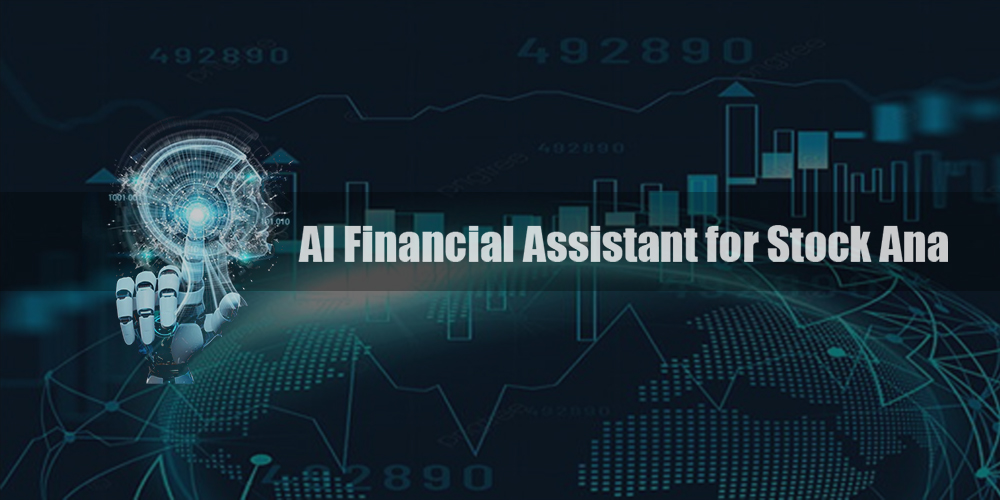20 Pro Tips For Deciding On Best Ai For Trading Websites
20 Pro Tips For Deciding On Best Ai For Trading Websites
Blog Article
Top 10 Tips For Evaluating The Data Quality And Sources Of Ai Platform For Predicting And Analyzing Trades
To ensure reliable and accurate insights, it is essential to evaluate the accuracy of data sources and AI-driven platforms for trading stocks. Insufficient data could lead to inaccurate forecasts or financial losses. It can also cause a mistrust of the system. Here are 10 top methods to assess the quality of data and the source:
1. Verify data source
Be sure to verify the source: Ensure that the platform has information from reliable sources (e.g. Bloomberg, Reuters Morningstar or exchanges like NYSE and NASDAQ).
Transparency. Platforms should disclose their data sources and regularly updated.
Beware of dependence on one source: Trustworthy platforms integrate information from multiple sources in order to reduce biases and errors.
2. Assess Data Freshness
Real-time vs. Delayed Data: Find out if the platform is providing real-time data or delayed information. Real-time information is essential for trading that is active. Data that is delayed can be sufficient to provide long-term analysis.
Update frequency: Make sure you check when the data has been changed.
Historical data accuracy Be sure the data is accurate and consistent.
3. Evaluate Data Completeness
Find missing data: Look for gaps in data from the past as well as tickers that are not working or incomplete financial statements.
Coverage: Ensure whether the platform you are using supports an extensive range of the indices and stocks that are relevant to your strategy.
Corporate actions: Check if the platform accounts for dividends, stock splits mergers as well as other corporate actions.
4. Accuracy of Test Data
Cross-verify data: Compare the data from the platform to other reliable sources to ensure consistency.
Error detection: Search for price errors, mismatched financial metrics or outliers.
Backtesting: You may use the historical data to evaluate trading strategies. Examine if they meet your expectations.
5. Granularity of data can be evaluated
The platform must provide detailed information, including intraday prices, volumes, bid-ask and depth of the order book.
Financial metrics: Check if the platform has complete financial statements (income statement or balance sheet, cash flow) and key ratios (P/E, P/B, ROE, etc. ).
6. Check for Data Cleansing and Preprocessing
Normalization of data is crucial for ensuring consistency.
Outlier handling - Verify the way the platform handles anomalies and outliers.
Data imputation is not working: Find out whether the platform has reliable techniques to fill in missing data points.
7. Evaluate the data consistency
Timezone alignment: Ensure that all data is aligned to the same timezone, to ensure that there are no differences.
Format consistency: Determine if the data is presented in a consistent format (e.g. units, currency).
Cross-market compatibility: Ensure whether data from different exchanges or markets is harmonized.
8. Relevance of Data
Relevance to your trading strategy: Check that the data you're using is in accordance with the style you prefer to use in trading (e.g. technical analysis or qualitative modeling and fundamental analysis).
Feature Selection: Determine if the platform provides useful features, such as sentiment analysis, economic indicators, and news data, which can improve forecasts.
Examine the integrity and security of your information
Data encryption - Ensure that your platform is using encryption to protect information during storage and transmission.
Tamper-proofing: Ensure that the data isn't altered or altered by the platform.
Verify compliance: The platform should be compliant with laws on data protection.
10. Transparency in the AI Model of the Platform is Tested
Explainability: Ensure the platform provides you with insights on the AI model's use of data in making predictions.
Bias detection - Check to determine if your system actively monitors models and data for biases.
Performance metrics. Examine the performance metrics like accuracy, precision, and recall to assess the validity of the platform.
Bonus Tips:
Feedback from users and reputation Review user reviews and feedback to assess the reliability of the platform.
Trial period: Try the trial period for free or demo to check the platform's data quality and features prior to signing.
Customer support: Make sure the platform offers a solid support for data-related problems.
Utilize these suggestions to determine the source of information and quality of AI platform for stock predictions. Make educated decisions regarding trading by using this information. See the best trader ai for more examples including ai copyright trading bot, ai investment advisor, best ai trading software, stock analysis app, copyright ai trading bot, invest ai, ai trading software, ai stock price prediction, ai stocks to invest in, free ai tool for stock market india and more.
Top 10 Tips On Assessing The Scalability Of Ai Platform For Analyzing And Predicting Trading Stocks
To make sure that AI-driven prediction and trading platforms are able to handle the growing quantity of user input, data and market complexity, it is vital to determine their capacity. Here are 10 tips for evaluating scaling.
1. Evaluate Data Handling Capacity
TIP: Find out if the platform can handle and analyze large amounts of data (e.g. historical stock data, real-time market feeds, and alternative data like news or social media).
Why: Scalable platforms need to be able to handle growing volumes of data without compromising performance.
2. Test Real-Time Processing Ability
See the way the platform handles real-time streams of data, including price movements and breaking news.
Why: Trading decisions are made in real-time. Delays could lead traders to miss out on opportunities.
3. Cloud Infrastructure and Elasticity
Tip. Find out if the platform is using cloud-based infrastructure like AWS, Google Cloud and Azure that can scale resources on demand.
Why: Cloud platform elasticity allows the system's size to alter based on the use.
4. Algorithm Efficiency
Tip: Determine the efficiency of AI models used to make predictions (e.g. Deep Learning or Reinforcement learning).
The reason: Complex algorithms can be resource intensive Therefore, the ability to optimize these algorithms is crucial for scalability.
5. Find out more about Parallel Processing and Distributed Computer Systems
TIP: Check if the platform is able to use distributed computing and parallel processing frameworks.
Why: These technologies allow faster data processing and analytics across multiple nodes.
Examine API Integration and Interoperability
Test the integration capabilities of the platform with external APIs.
Why: Seamless Integration ensures that the platform can easily adapt to changes in information sources, trading environments and other elements.
7. Analyze User Load Handling
To check the effectiveness of your system, try simulated high-volume traffic.
The reason is that a platform that is scalable should be able to maintain its performance as the number of users grow.
8. Examine the Retraining Model and its Adaptability
Tip: Examine how often and efficiently the AI models are retrained with new data.
Why? Markets are constantly changing, and models have to evolve quickly to remain precise.
9. Check Fault Tolerance (Fault Tolerance) and Redundancy
TIP: Ensure that the platform has failover mechanism and redundancy for hardware or software failures.
Why: Downtime is costly for trading. So fault tolerance is vital to scaling.
10. Monitor Cost Efficiency
Analyze your platform's cost which includes cloud's storage, cloud resources and computation power.
The reason: Scalability should not be at the expense of unsustainable costs. It is thus crucial to strike a fair balance between performance and cost.
Bonus Tip: Future-Proofing
Check that the platform can adjust to changes in regulations and incorporates emerging technologies like quantum computing, or even advanced NLP.
Concentrating on these factors will help you evaluate the scalability AI stock prediction and trading platform, and ensure they are robust, efficient and prepared for expansion in the future. Take a look at the top rated recommended you read about ai stocks for site advice including ai investment platform, incite, stock ai, ai investment advisor, free ai trading bot, ai based trading platform, ai stock prediction, incite, ai hedge fund outperforms market, stock analysis app and more.